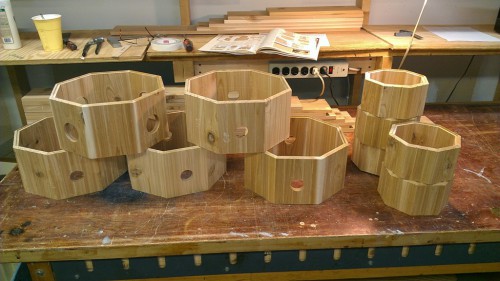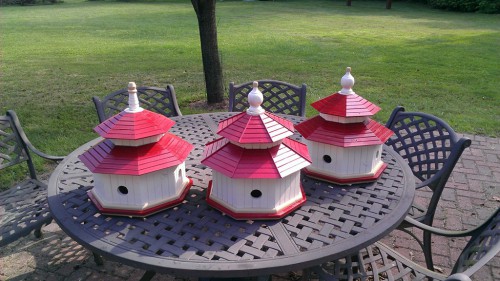When embarking on a new woodworking project, I ask myself if the item of interest would be a good candidate for making more than one. This usually comes down to answering these specific questions:
Can I use multiple copies? If I’m building a Murphy bed for the man cave, there’s no need to build more than one. But if I’m planning on building a coat rack and the holiday season is approaching, this could be a good opportunity to make additional racks to give out as gifts.
How many copies should I make? Sometimes this question is decided in answering the first question. For example, several years ago I decided to build study desks for my kids. Three kids, three desks. Easy decision. But in many cases, deciding the number of copies to make is a judgment call that involves cost and level of effort.
How much will each copy cost? This generally relates to how large and/or complex the project is. I seldom spend more than a few hundred dollars on materials – many times, it’s under 50 bucks – so the additional material cost is usually not a big factor in my decision to make multiples. I don’t attach a dollar figure to my labor since I don’t do woodworking for a living but I do treat the labor involved as an “effort cost”. Some projects such as an intricate marquetry landscape scene may not cost much in materials but require considerable amounts of effort/time.
Is the design and prep a considerable chunk of the overall effort? In many cases, the time spent designing, creating jigs, setting up machines, and figuring out cutting procedures can take as much time as the actual cutting and finishing. In these cases, the multiple copies route becomes very appealing, assuming the previous questions have been answered in the affirmative. Why not recoup some of the investment put into design and prep?
Here is a good example of what I’m talking about. I was looking for a challenging winter woodworking project and I eventually decided to build a fancy, octagonal bird house based on some plans I found in an old issue of Woodsmith. The house looked quite spiffy and I immediately started thinking about how nice it would look to have a couple of these houses along the back edge of our property. Then I started thinking about some family members with large yards that would no doubt appreciate a house like this as a gift. The answer to the first question – can I use multiple copies? – was a resounding yes. I also came up with an initial idea for the number of houses I wished to build which was 5.
Next I had to decide if the cost of making extra copies was within budget. The primary material cost for the bird house was the cedar wood. A single house required 16 board feet of cedar. At $2.75 per square foot, this worked out to about $44 per house or $220 for five houses. A tad expensive for bird houses but these would be top quality so I decided the budget could support the endeavor.
Having ready-made plans saved plenty of design time right off the bat but, in reviewing the plans, I realized there were a lot of tricky angles to cut, detailed milling and routing operations, and intricate glue-up procedures. Specific tasks included squaring and planing the rough lumber, routing equally-spaced grooves, cutting pieces to length, beveling the wall sides, cutting compound angles for the roof pieces, cutting octagonal panels, rabbeting the wall and cupola tops to accommodate the panels, creating quarter-round molding, drilling entry holes, making mounting brackets, and gluing up all the components. Many of these tasks involved setting up jigs, making a cut, readjusting the jig or spacing, making another cut, etc.
Clearly, this was a project where the prep and setup would be hefty. To my way of thinking, it would have been crazy to only make a single bird house. The most logical choice was to make multiple copies because this would allow me to better leverage the time and effort put into building the first house.
If I were pressed to offer a single rule of thumb for deciding to make multiples, it would be this: Multiples make sense if the time required to make each additional copy of an item is markedly less than the time required to make just a single item. For example, if it takes 6 hours to build a single bird house but each subsequent house only requires 3 hours, a strong argument can be made for building multiple houses.
To illustrate this point: Considerable effort was involved in setting up the table saw to make the compound miter cuts for the roof pieces of the bird house. The plans provided the specific angles but it was up to me to tilt the blade to the exact angle. There was a bit of trial and error involved to arrive at this angle. I also had to add a custom jig to the sliding sled to securely hold each piece in the proper position. It probably took about 20 minutes of effort. But once the angle was set, I was able to cut the roof pieces for each house in about 10 minutes. So, it took 30 minutes total to cut the pieces for a single house but only 10 minutes for each additional copy. Similar time savings applied to all the other cutting steps. Ah, the beauty of multiples.



